When baking with solar power, you'll need to carefully manage moisture levels for ideal results. Start by monitoring the cooking chamber's temperature and humidity using a meter, aiming for 30-50% relative humidity. You can control excess moisture by propping open the glass door slightly or using dark-colored tea towels to absorb condensation. Adjust your water content seasonally – reduce by 10% in summer and increase slightly in winter. Keep ingredients in cool, dry storage and cover your dough during proofing. By mastering these moisture control techniques, you'll reveal the secret to perfect solar-baked goods.
Why Moisture Matters
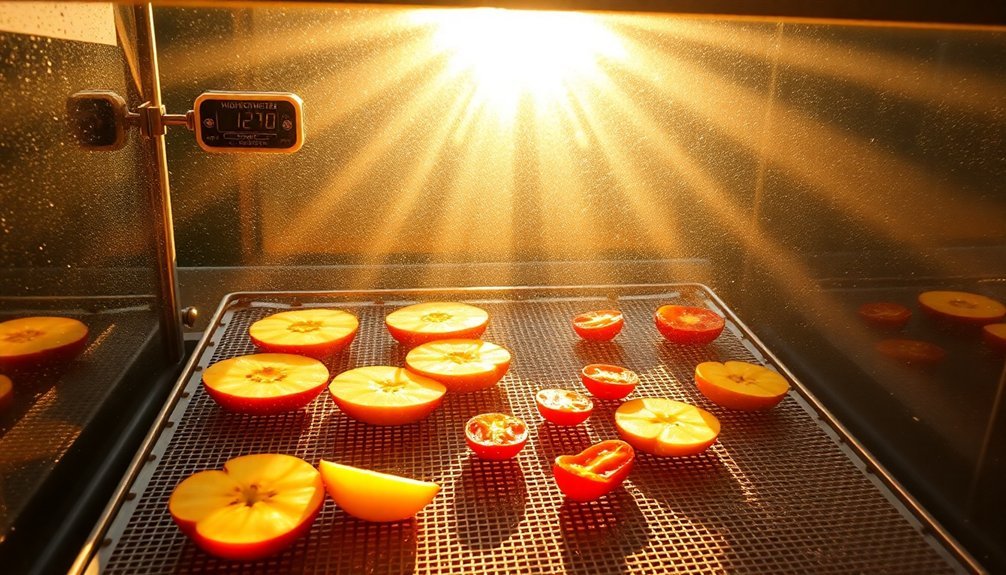
When it comes to baking success, moisture plays an essential role in determining your final product's texture, flavor, and shelf life. Without proper moisture control, you'll struggle to achieve the perfect bake you're aiming for.
Too much or too little water can ruin your baked goods – excess moisture creates gummy textures while insufficient amounts leave products dry and crumbly. Moisture works hard in your recipes by breaking down sugar and protein structures, making your baked goods tender. It's also vital for dissolving and distributing flavors evenly throughout your creation.
When you use ingredients like milk, buttermilk, or yogurt, you're not just adding liquid – you're incorporating fats, acids, and sugars that enhance both texture and taste.
In the oven, moisture transforms into steam, acting as a natural leavening agent. This steam expansion helps push your dough upward and outward, creating that light, airy texture you're looking for in breads and pastries.
Quick Moisture Control Methods
Although controlling moisture might seem challenging, several quick methods can help you achieve the perfect balance in your baking. You can unlatch the glass door slightly or place a small object between the gasket and door to let excess moisture escape while retaining heat.
Monitor the cooking chamber temperature to verify this method works effectively.
For recipes that generate high moisture, place a dark-colored tea towel under the pot lid. This simple technique absorbs excess condensation and works particularly well for dishes like Bolognese sauce. Poor ventilation systems can significantly increase moisture buildup in your sun oven.
You'll also want to manage the surrounding environment by maintaining 30-50% relative humidity. Use fans or dehumidifiers to improve air circulation, and during cold weather, lower the air temperature to reduce condensation.
Remember to check seals regularly for ideal moisture control.
Smart Venting Techniques
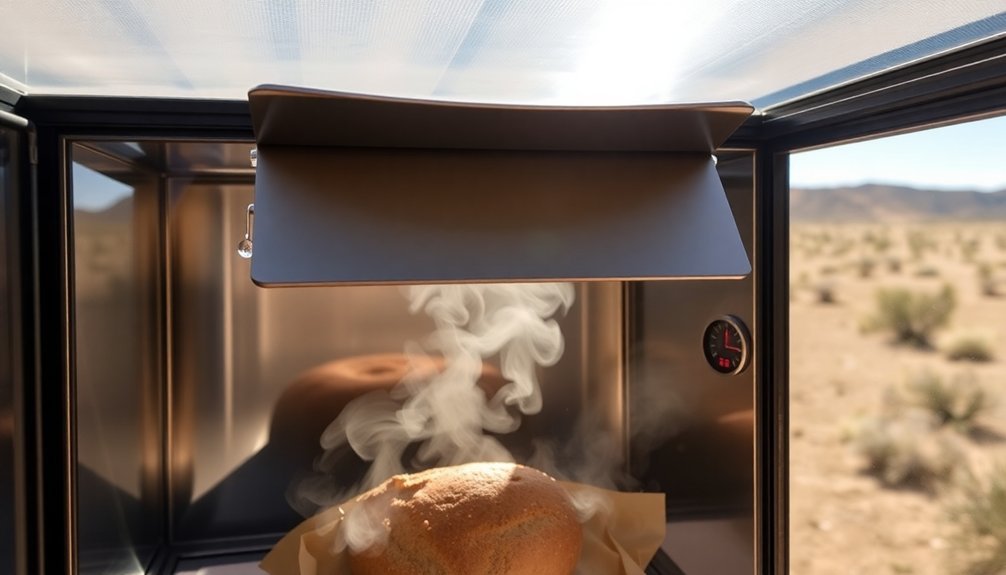
Since home ovens naturally vent moisture, you don't need complex venting systems like those found in commercial kitchens.
By understanding your oven's built-in features and applying smart venting techniques, you'll achieve better baking results. Opening the door slightly with a metal spoon is another effective venting method.
- Use your oven's convection setting to quickly remove excess moisture while maintaining even heat distribution.
- Remove steam sources like water pans or wet towels after the first 15-20 minutes of baking.
- Lower the temperature slightly after removing steam sources to maintain energy efficiency.
- Place a preheated baking stone in your oven to help offset any heat loss during venting.
Remember that timing is essential when venting moisture.
You'll want to keep steam during the initial baking phase for proper crust development, then vent it to achieve the perfect texture.
Your oven's natural venting capabilities, combined with these techniques, will give you professional-quality results.
Absorbing Steam During Baking
Managing steam absorption during baking requires a careful balance between moisture retention and release. You'll need to monitor the humidity levels carefully to achieve the perfect crust texture and interior crumb structure. By controlling steam absorption, you can prevent your dough from drying too quickly while ensuring it doesn't become overly moist. Excessive steam can produce tough, leathery crusts that hinder proper heat penetration.
| Time | Steam Level | Action Required |
|---|---|---|
| Early Stage | High | Keep moisture trapped |
| Mid-Stage | Moderate | Begin controlled venting |
| Late Stage | Low | Release excess steam |
| Final Stage | Minimal | Allow crust to crisp |
To absorb excess steam, you'll want to vent your oven strategically during the baking process. If you're using a Dutch oven, remove the lid after the initial steam phase. For open baking, prop the oven door slightly to release moisture when needed.
Seasonal Moisture Management Tips
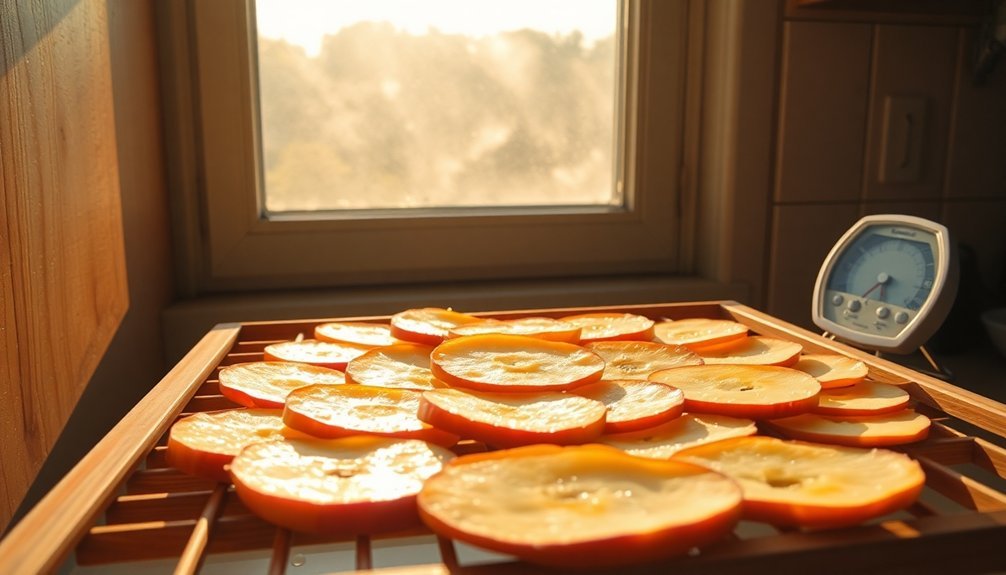
When seasons change, you'll need to adapt your baking techniques to maintain consistent results throughout the year.
During summer months, reduce water content by 10% and use cooler water to control yeast activity. In winter, you'll want to increase hydration slightly and use warmer water to compensate for dry air.
- Monitor your kitchen's temperature, keeping it below 85°F to prevent dough from overheating.
- Use a humidity meter to track moisture levels and adjust your recipe accordingly.
- Store your ingredients in cool, dry places and cover dough during proofing.
- Track your seasonal adjustments in a log to refine your techniques.
Remember to use your HVAC system or dehumidifiers to regulate the environment, and consider investing in a proofing cabinet for more consistent results year-round.
Frequently Asked Questions
Can I Cook Frozen Foods Directly in a Solar Oven?
Yes, you can cook frozen foods directly in your solar oven! You'll get great results with stir-fries, dumplings, and pies. Just place them in your pre-heated solar oven and let the sun work its magic.
How Does Altitude Affect Moisture Control in Solar Ovens?
You'll get better moisture control at higher altitudes due to increased solar radiation and less atmospheric interference. Your food will cook more evenly, with consistent temperatures helping manage moisture levels in your solar oven.
What Materials Should I Avoid Using That Might Create Excess Moisture?
You'll want to avoid wax paper, unsealed containers, fresh fruits, high-moisture fillings, uncoated metal surfaces, and fabrics. These materials can trap or release excess moisture, affecting your food's texture and quality.
Will Adding Spices or Seasonings Impact Condensation Levels During Cooking?
No, your spices and seasonings won't greatly affect condensation during cooking. The real drivers of moisture are your cooking heat, humidity levels, and liquid ingredients – not the small amount in spices.
Can I Use Moisture-Controlling Techniques When Reheating Previously Cooked Food?
Yes, you can control moisture when reheating food by using covered containers, adding a damp paper towel, arranging food in a circle, and following proper timing guidelines to prevent drying out your dishes.
In Summary
You'll find moisture control is essential for successful solar baking. Remember to pre-dry ingredients when possible, use proper venting techniques, and adjust your methods based on seasonal humidity levels. Don't forget to keep moisture-absorbing materials handy and monitor steam levels during baking. With these practices, you're well-equipped to create perfectly baked goods using the sun's natural energy.
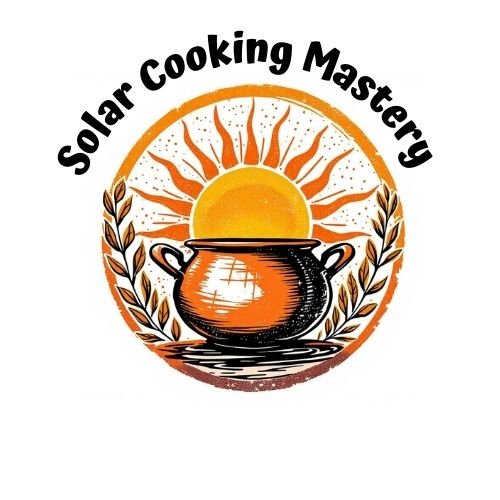
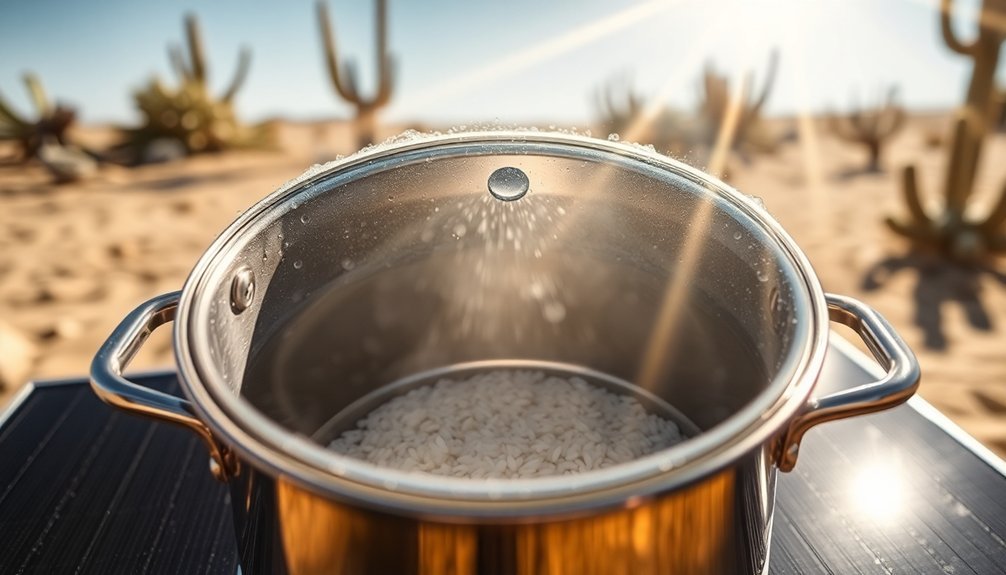
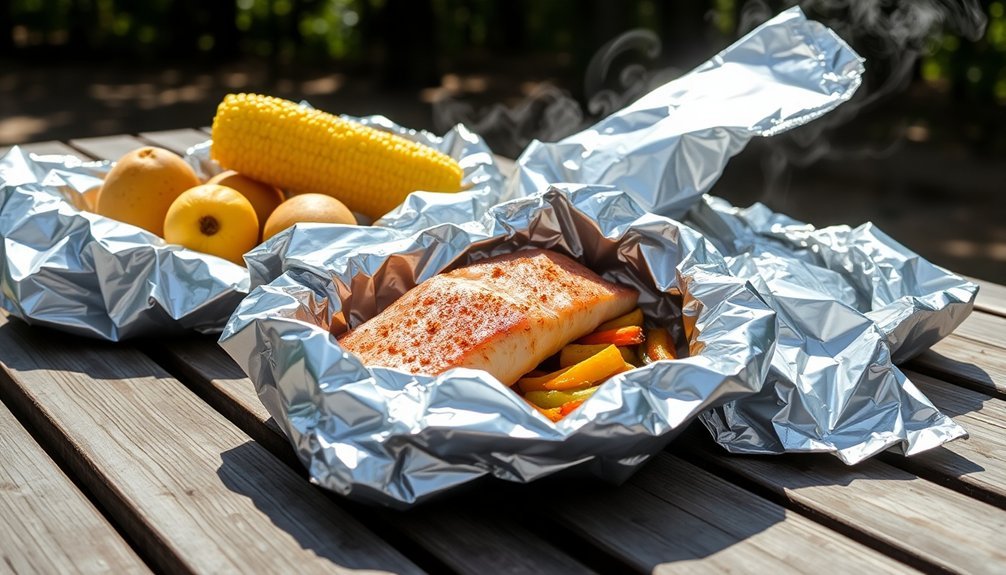
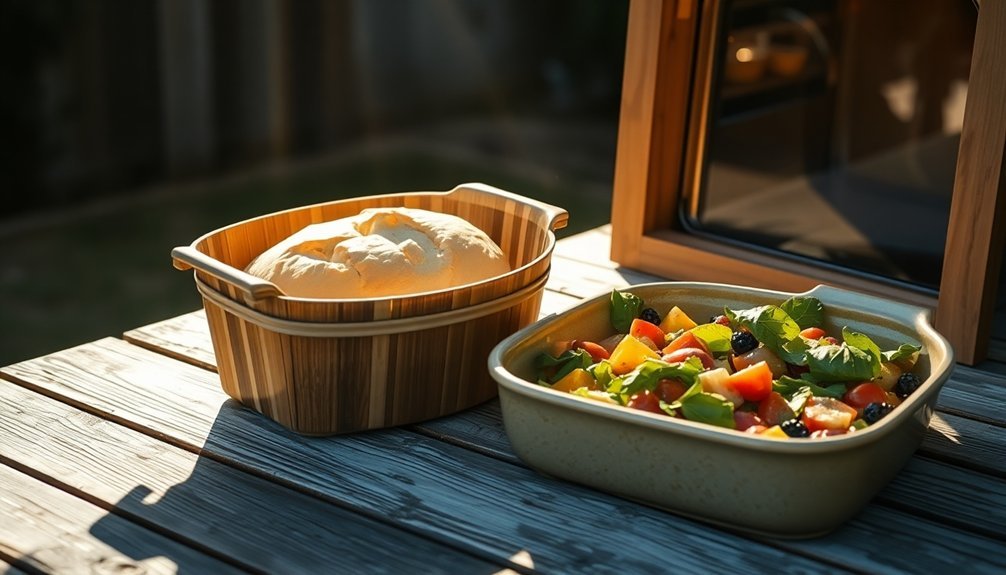
Leave a Reply